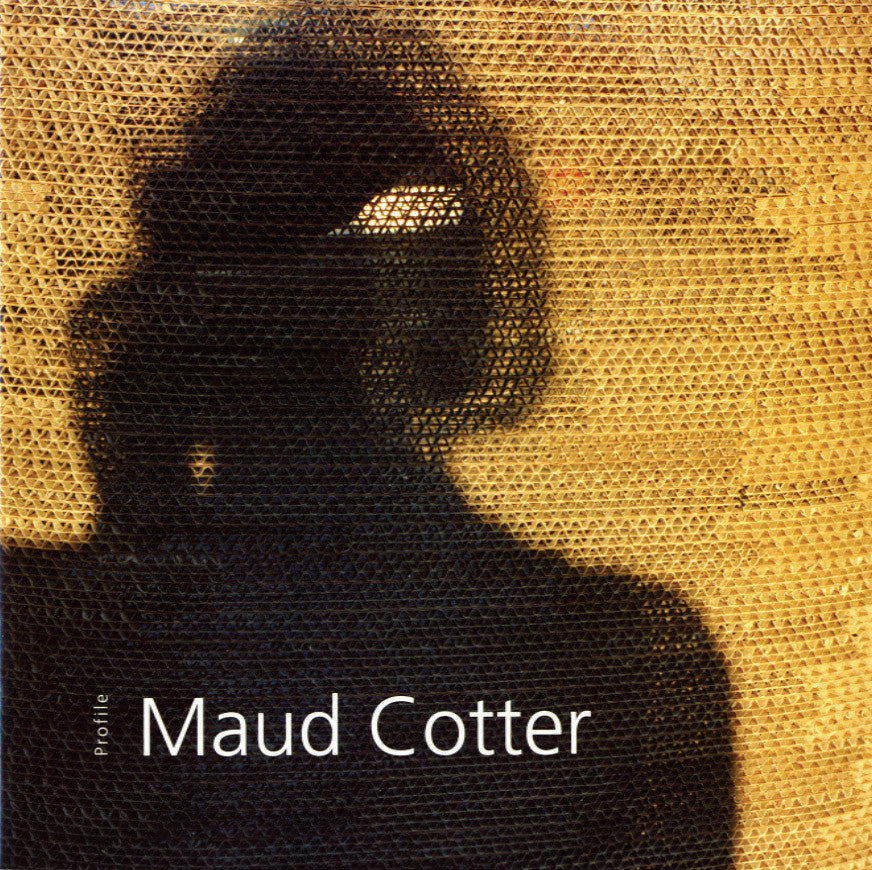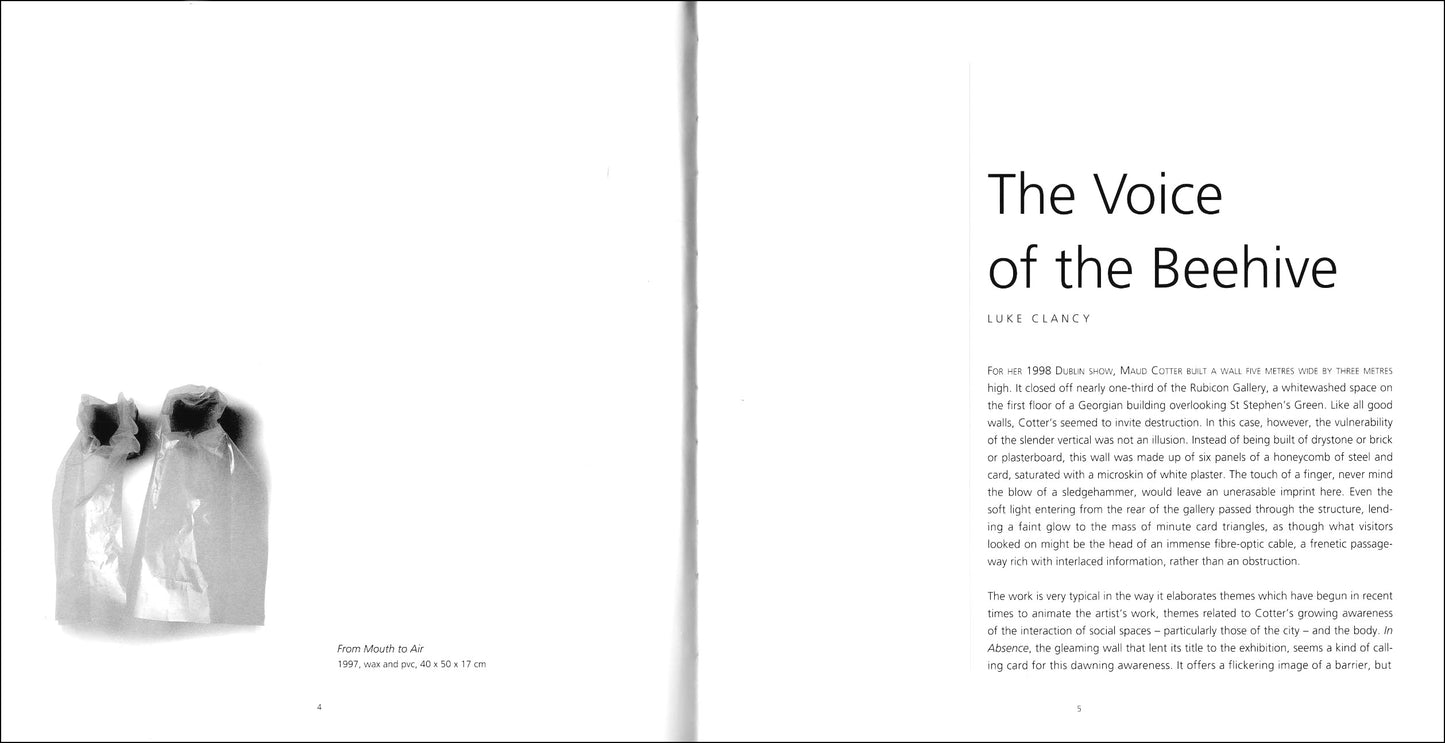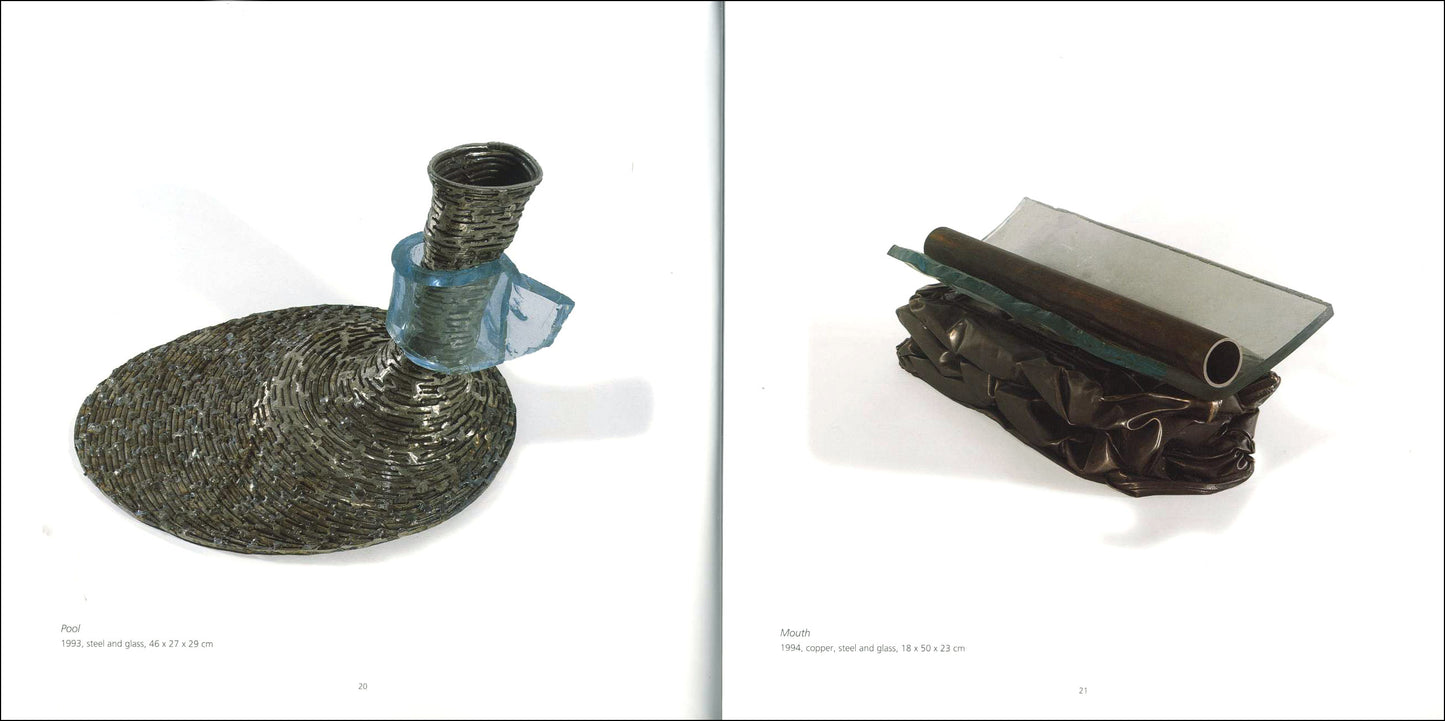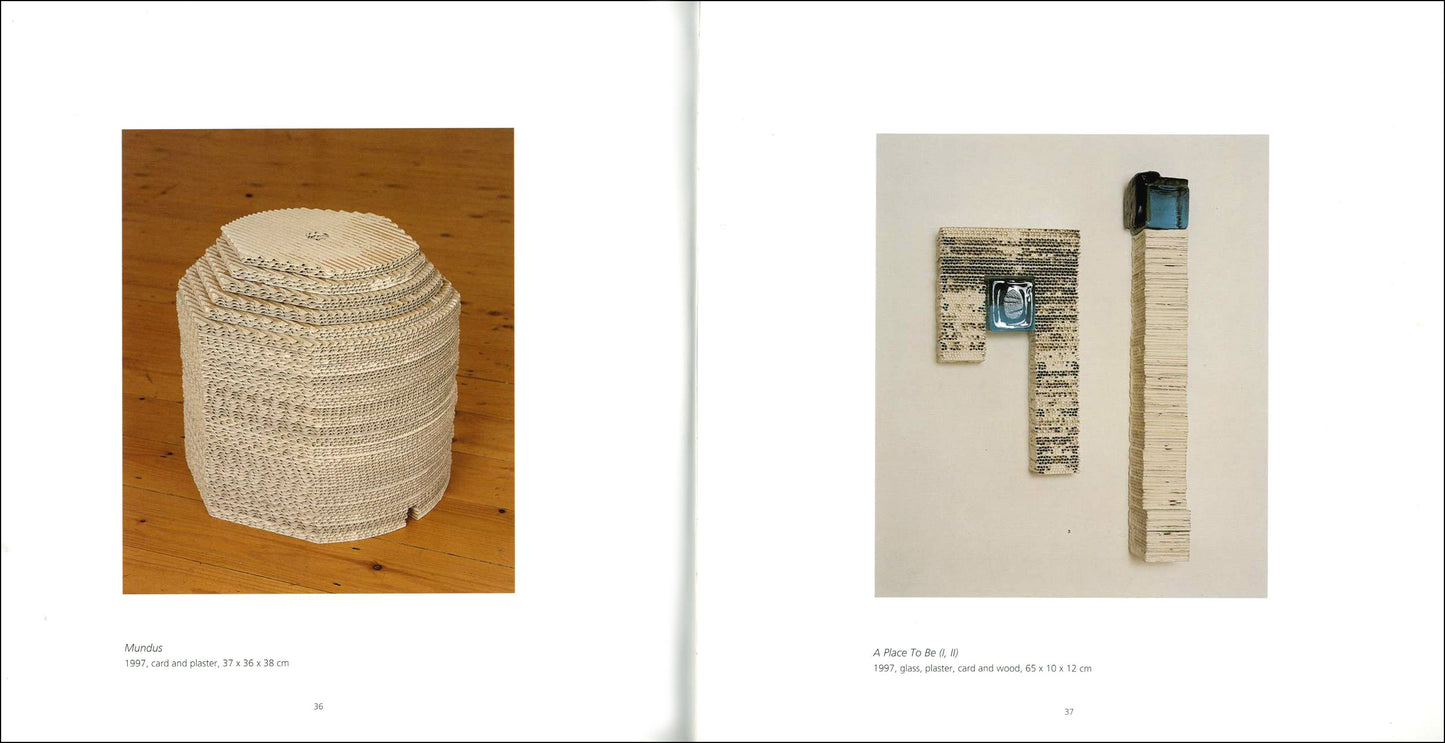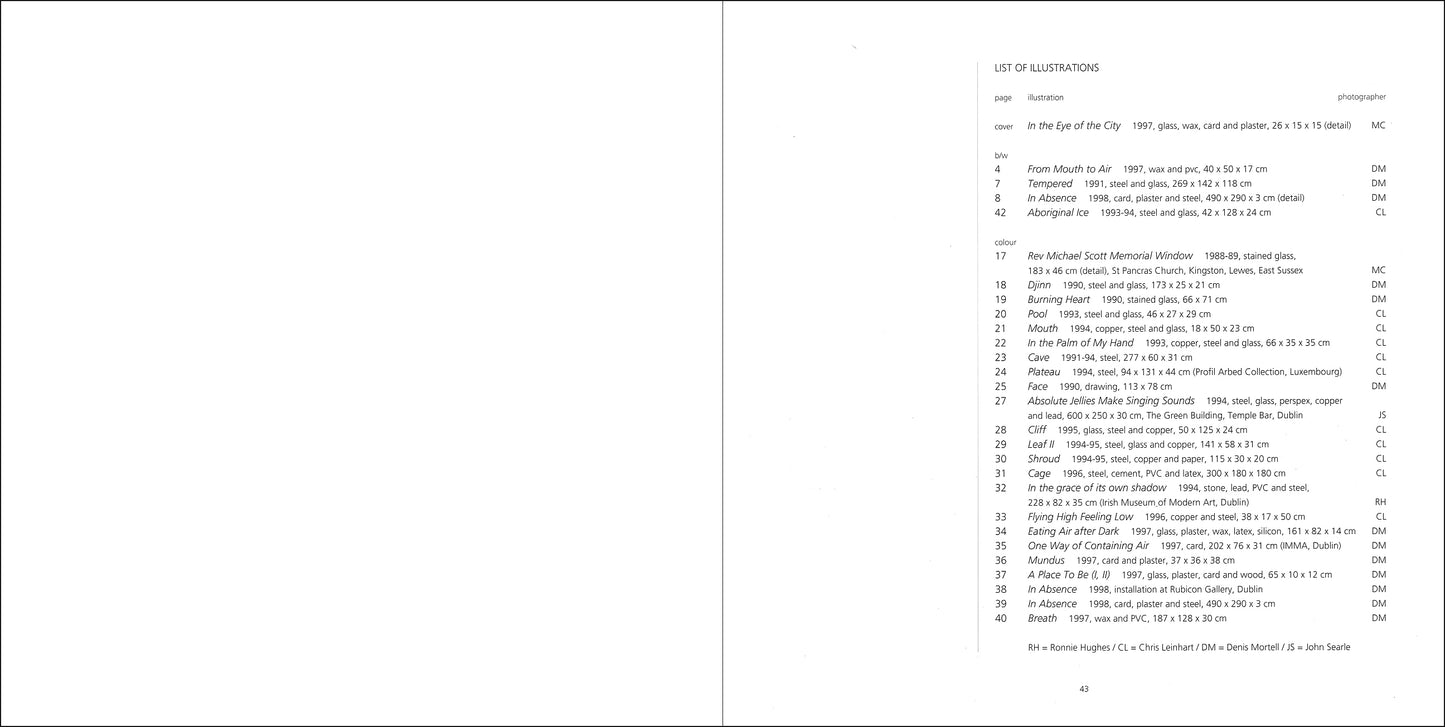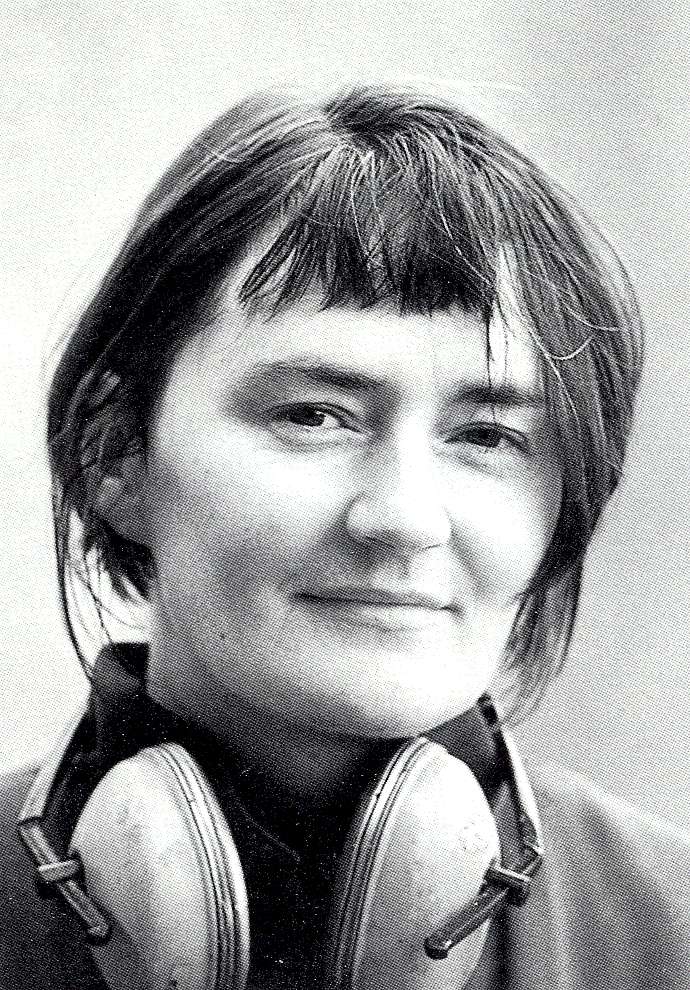Gandon Editions
Profile °8 – MAUD COTTER
Profile °8 – MAUD COTTER
Couldn't load pickup availability
Share
essay and interview by Luke Clancy
ISBN 978 0946846 078 48 pages (paperback) 22.5x22.5cm 30 illus
Much of the inspiration for Maud Cotter’s work has been derived from the landscape. Some of her well-known stained-glass work came out of a significant period spent in Iceland, before a shift in focus from rural to urban settings occurred. This book follows these shifts over the years, the impact of her work in situ, and its contrasting strength and fragility. Using delicate materials in powerful ways, she continues her search for alternatives to tradtional heavyweight materials, such as steel and glass, to convey her view of the world and her place in it.
EXTRACTS
"For her 1998 Dublin show, Maud Cotter built a wall five metres wide by three metres high. It closed off nearly one-third of the Rubicon Gallery, a whitewashed space on the first floor of a Georgian building overlooking St Stephen’s Green. Like all good walls, Cotter’s seemed to invite destruction. In this case, however, the vulnerability of the slender vertical was not an illusion. Instead of being built of drystone or brick or plasterboard, this wall was made up of six panels of a honeycomb of steel and card, saturated with a microskin of white plaster. The touch of a finger, never mind the blow of a sledgehammer, would leave an unerasable imprint here. Even the soft light entering from the rear of the gallery passed through the structure, lending a faint glow to the mass of minute card triangles, as though what visitors looked on might be the head of an immense fibre-optic cable, a frenetic passageway rich with interlaced information, rather than an obstruction. The work is very typical in the way it elaborates themes which have begun in recent times to animate the artist’s work, themes related to Cotter’s growing awareness of the interaction of social spaces – particularly those of the city – and the body."
— from the essay by Luke Clancy
"I think that intimacy with the structures around me was what deepened my connection with what was literally on the studio floor. I felt myself moving towards a molecular vision, rather than a physical form. The card pieces evolved from being in the company of this little piece of card I found in my studio. I used the PVC to covered my pieces to protect them from dust and loved the world that created. So my choices were informed by the intensity of the present. The wall-piece made for the Rubicon show was a metaphor for that process, body as a filter of the city. The chambers of air on either side of that piece were important to me. I found that piece very rewarding as I wanted to find something that encompassed the monumental and the molecular, form and filter. I titled it In Absence before I made it in the hope that it would gesture to that sensitivity of being with materials in the present moment, but dispersed as well, almost dematerialised, dispersing the connection. The In Absence show for me has been a resolution, an arrival into cohabitation with the structures we build around our bodies. I feel in contact with the fabric of things, not the narrative. I inhabit this new world now in a way that I used to inhabit landscape. I feel indivisible from it."
— Maud Cotter in conversation with Luke Clancy
|
CONTENTS The Voice of the Beehive essay by Luke Clancy 4-9 A Conversation with the Artist interview by Luke Clancy 11-16 COLOUR PLATES 17-42 List of illustrations / Artist’s biography |
She perpetually experiments, explores for new effects. Manipulated by the artist in her typical fashion and enhanced by her word images, [the materials] grow beyond the conceivable to become conceptual and insubstantial. — Hilary Pyle, Circa
